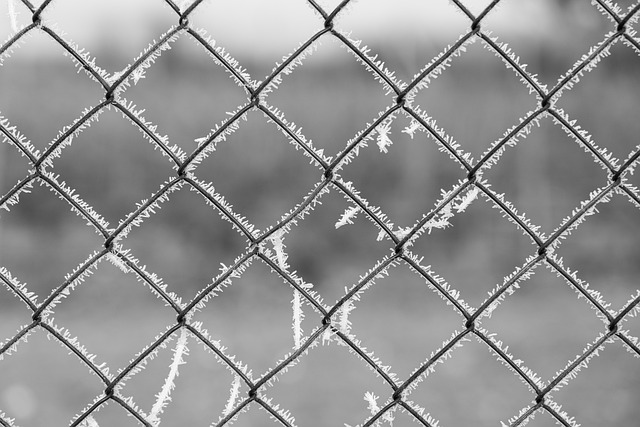New Bedford, Massachusetts homeowners considering a DIY fence installation project can benefit from these comprehensive tips. Before beginning, familiarize yourself with local regulations to ensure compliance. Choose a fence style and material that align with your aesthetic preferences and budget. Plan your layout meticulously, measuring distances accurately. Assemble the necessary tools and equipment for a successful installation. Follow our step-by-step guide to construct a durable and aesthetically pleasing fence with confidence.
- Understanding Fence Regulations in New Bedford
- Choosing the Right Fence Style and Material
- Measuring and Planning Your Fence Layout
- Tools and Equipment You'll Need for Installation
- Step-by-Step Guide to DIY Fence Construction
Understanding Fence Regulations in New Bedford
Before installing a fence, New Bedford homeowners should familiarize themselves with local regulations and building codes. These rules are in place to ensure safety, maintain neighborhood aesthetics, and prevent property disputes. Check with the New Bedford Planning Department or Building Department for specific guidelines. You’ll want to know about permitted fence materials, heights, setbacks from property lines, and any historical or environmental considerations. Understanding these regulations early on can save you time, money, and potential legal issues during or after your fence installation project.
Additionally, some neighborhoods have Homeowners Associations (HOAs) with their own design guidelines for fences. If your property is within an HOA, ensure you get the necessary approvals to avoid any penalties. Being informed and compliant will contribute to a smooth DIY fence installation process and ensure your new fence meets all legal requirements.
Choosing the Right Fence Style and Material
When selecting a fence style for your New Bedford property, consider both aesthetic preferences and functional needs. Fences serve various purposes—from defining your yard’s boundaries to enhancing security and privacy. Traditional options include wood, vinyl, or chain-link fences, each with its advantages and maintenance requirements. Wood offers natural beauty but demands regular staining or sealing; vinyl is low-maintenance yet may not provide the same level of privacy as other materials; and chain-link offers high security at a lower cost but lacks aesthetic appeal.
Material choice should align with your climate considerations. In Massachusetts, weather fluctuations can take a toll on fencing. Opting for durable materials that can withstand snow, ice, and varying temperatures is key to long-term satisfaction. Researching local regulations regarding fence styles and materials is also essential before beginning installation to ensure compliance and avoid potential penalties.
Measuring and Planning Your Fence Layout
Before you begin installing your fence, careful planning and measurement are essential. Start by walking the perimeter of your property, noting any trees, structures, or other obstacles that might affect your layout. Use a tape measure to take precise measurements from corner to corner, ensuring you account for gates or posts along the way. Create a simple sketch or use a mapping app to visualize the fence’s placement and consider the best design for your space – whether it’s a traditional straight line or something more complex.
This preliminary step will save you time and frustration down the line. It helps ensure that your fence not only looks good but also complies with local regulations, avoids damage to existing structures, and provides adequate privacy and security for your New Bedford property.
Tools and Equipment You'll Need for Installation
When it comes to DIY fence installation, having the right tools and equipment is paramount. For New Bedford homeowners, a standard set includes a measuring tape, level, hammer, post-hole digger, and a saw for cutting posts to size. Additionally, you’ll need fencing materials like wooden or vinyl posts, rails, and pickets, along with any necessary hardware such as brackets and screws.
Don’t forget about safety gear, including gloves, eye protection, and earplugs, especially when using power tools. Proper footwear is also essential for stability and comfort during the installation process. With these tools in hand, you’ll be well-prepared to tackle your fence project with confidence.
Step-by-Step Guide to DIY Fence Construction
Installing a fence yourself can be a rewarding project for New Bedford homeowners looking to enhance their outdoor space. Here’s a straightforward guide to building your own fence, making the process more manageable and cost-effective. Begin by measuring the perimeter of the area where you want the fence to stand. Use a string and stakes to outline the desired length and height, ensuring it aligns with local regulations. Next, gather your materials: wooden posts, boards, concrete for setting the posts, tools like post-hole diggers and hammers, and any hardware necessary for assembly.
Dig holes for the posts at regular intervals along the marked perimeter. The depth of these holes should be approximately one-third to half the height of the posts. Place a level in each hole to ensure accuracy before filling them with concrete. Once set, attach horizontal rails to the posts using brackets or nails. Then, secure the fence boards to the rails, ensuring they’re even and well-fastened. Regular maintenance, including occasional repairs and re-staining, will keep your DIY fence looking its best for years to come.
